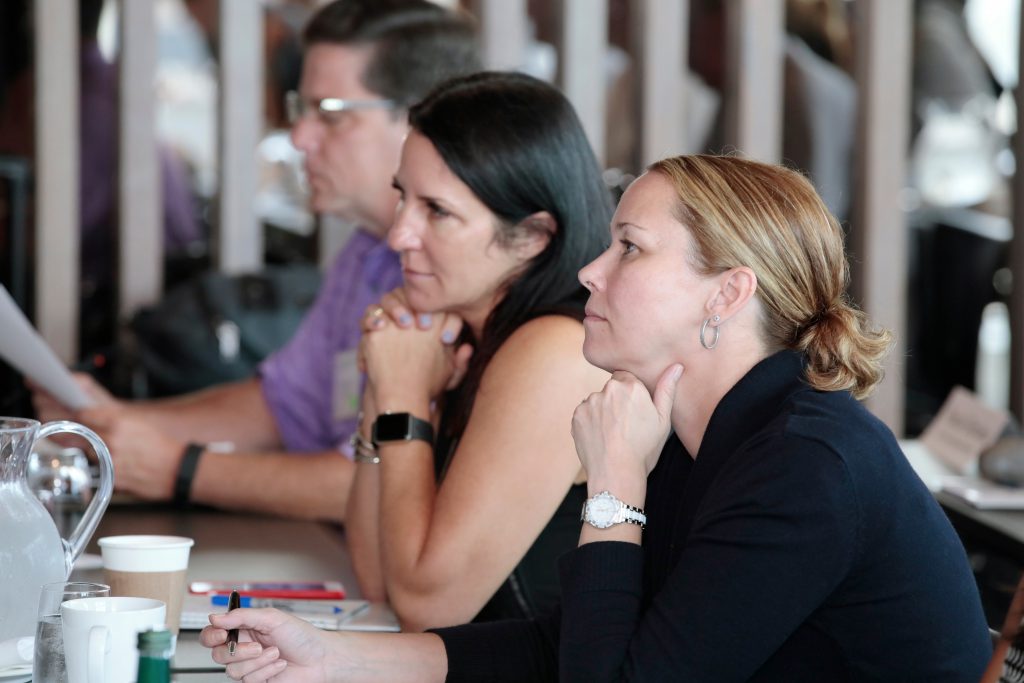2017 Global Forum Recap: John Lewis UK’s Retail Strategies
Anna Berry joined the John Lewis Partnership as a graduate-trainee in 1988. Following several positions in branch management, Ms. Berry transferred to a buying in 1993 and has been responsible for purchasing across numerous categories including menswear, sporting goods, gifts, jewelry and most recently, premium beauty. In addition, she has worked on the Electrical and Home Technology team, delivering e-solutions and roll-outs to transform store department into entertainment hubs. Ms. Berry has also worked in commercial management, driving supplier relationships and building business plans.
In 2015, Ms. Berry became Head of Buying for Cook and Dine and in 2017, stationery, gifts, gift food and Christmas stationery have been added to this Buying Group. Ms. Berry’s primary role is to support her buying team in delivering differentiated propositions while collaborating with key supplier to grow in a sustainable, mutually profitable way.

Background on John Lewis
John Lewis is Britain’s leading omni-channel retailer. Established in 1864, The John Lewis Partnership operates 34 department stores and 12 John Lewis At Home stores across the UK, plus stores at two airports. It operates a number of shops-within-shops in Australia, Malaysia, Ireland, Holland and Dubai. It also operates web store www.johnlewis.com, 352 Waitrose shops, www.waitrose.com and business-to-business contracts in the UK and abroad. Online platforms are integrated so that mobile, desktop and apps can seamlessly offer the same shopping experience. Online delivery locations recently increased from 32 to 39 countries.
Sales and Marketing
The business has annual gross sales of more than £11B. It has grown market share and sales in all categories since 2012 with seven years of growth in the home categories. Consumers shop in all channels at any time of day. In 2016, online percentage of sales grew to 35% from 29% in 2013. Store percentage of total sales shifted from 71% in 2013 to 65%, yet John Lewis has opened eight shops in three years, average 150-175,000 sq. ft. size. The company leverages its brand with financial services, international shop-in-shops and 3rd party relationships with key brands. Travel, health and well-being, hospitality services and food experiences inspire customers and increase frequency of shop visits.

John Lewis holds the #1 position in the market and has been voted UK’s favorite retailer. Brand affinity and consumer trust are core strengths. It carries all home/housewares categories, based upon high quality and high design, and a large selection of private label items, specific to departments. The average John Lewis department store occupies 132,000 sq. ft., but its London Oxford Street store is 320,000 sq. ft. Housewares percentage of total sales in the department stores is 10% and 50% in the At Home stores. It is the UK’s largest example of an employee-owned business in which all 86,700 staff are partners in the business.
Customers, Brands and Suppliers
John Lewis carefully tracks its customers and knows their preferences and how they shop. The top 400,000 customers represent 28% of total sales in 2017. Retail is undergoing transformational change. The shift to online increases expectations for convenience and changes spending habits to experiences over products. These changes put pressure on the business model and mean that cost efficiencies are needed. John Lewis is expanding theater and engagement events to build store visit frequencies. In-store special events promoted to their best customers sell out in a minute. Stores have added gym bars, cookery schools with chef events and dinner clubs. Future events will use new technologies, such as Google virtual reality.
John Lewis is loyal to its suppliers. To open a new account, an existing supplier must be delisted. It sources direct from vendors/suppliers, although if a UK distributor has an exclusive for a product, John Lewis will work with them. John Lewis is eager to develop new ranges with suppliers for exclusives and plans to expand its own brand. They aim to increase private label, and strengthen the fashion and home categories.
External Headwinds
External forces push the retailer to defend and differentiate as they face uncertainties.
Challenges include post Brexit issues and exchange rates. National living wage conditions also impact John Lewis profits because of pricing policies and increased personnel costs. The company is increasing investments in IT, logistics and warehouse; the increase in online shopping also means that 50% of products sold include delivery costs.
Corporate website: www.johnlewispartnershp.co.uk
Consumer website: www.johnlewis.com



